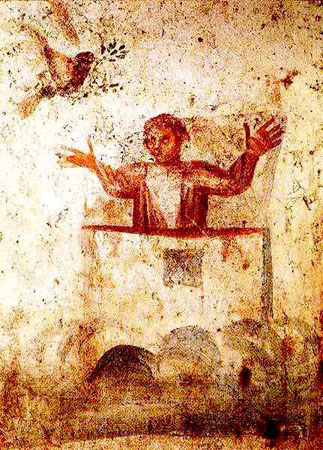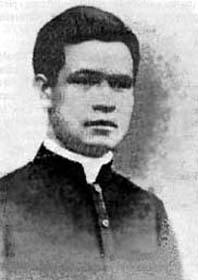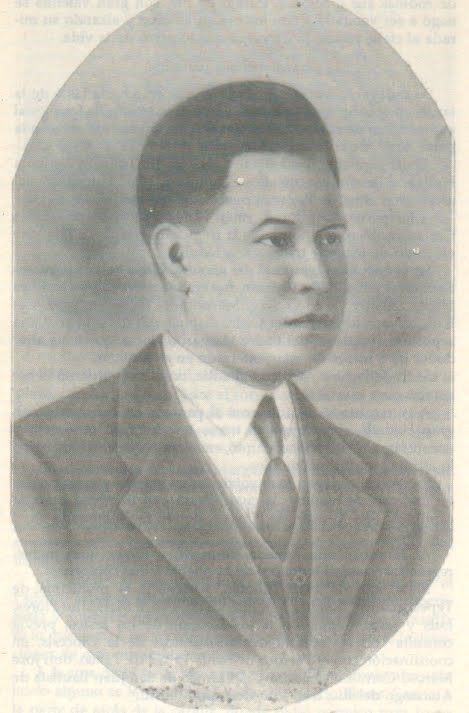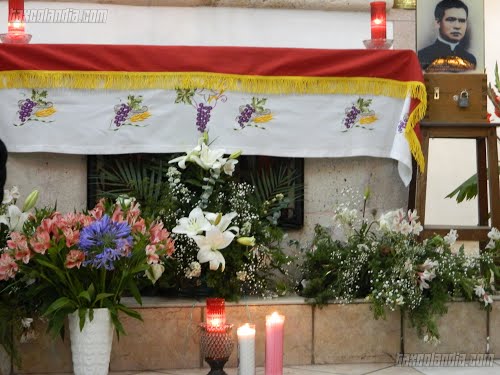Noé
Patriarche de l'Ancien Testament
01 Le Seigneur dit à Noé: «Entre dans l'arche, toi et toute ta famille, car tu es le seul juste que je vois dans cette génération.
02 De tous les animaux purs, tu prendras sept couples de chaque espèce; des animaux qui ne sont pas purs, tu prendras un couple de chaque espèce;
03 et des oiseaux du ciel, sept couples de chaque espèce pour en perpétuer la race sur toute la terre.
04 Car il ne reste plus que sept jours, et je vais faire tomber la pluie sur la terre, pendant quarante jours et quarante nuits, pour effacer de la surface du sol tous les êtres que j'ai faits.»
05 Noé fit tout ce que le Seigneur lui avait commandé.
10 Sept jours plus tard, les eaux du déluge étaient sur la terre.
Le Déluge (Gn 6-9) Dieu renouvelle la surface de la terre et fait Alliance avec tous les hommes!
Livre de la Genèse: 9, 8-15
Après le déluge, Dieu dit à Noé et à ses fils: «Voici que moi, j’établis mon alliance avec vous, avec tous vos descendants, et avec tous les êtres vivants qui sont autour de vous: les oiseaux, les animaux domestiques, toutes les bêtes sauvages, tout ce qui est sorti de l’arche pour repeupler la terre. Oui, j’établis mon alliance avec vous: aucun être vivant ne sera plus détruit par les eaux du déluge, il n’y aura plus de déluge pour ravager la terre.» Dieu dit encore: «Voici le signe de l’alliance que j’établis entre moi et vous, et avec tous les êtres vivants qui sont autour de vous, pour toutes les générations à venir: Je mets mon arc au milieu des nuages, pour qu’il soit le signe de l’alliance entre moi et la terre. Lorsque je rassemblerai les nuages au-dessus de la terre, et que l’arc-en-ciel paraîtra au milieu des nuages, je me souviendrai de mon alliance avec vous et avec tous les êtres vivants, et les eaux ne produiront plus le déluge, qui détruit tout être vivant.»
Dieu bénit Noé et ses fils. Il dit : "Soyez
féconds, multipliez-vous, remplissez la terre." Gn. 9, 1
Noah
[Hebrew Nôah, "rest"; Greek Noah; Latin Noah].
The ninth patriarch of the Sethite line,
grandson of Mathusala and son of Lamech, who with his family was saved from the Deluge and thus became the second father of the human race (Genesis 5:25-9:29).
The name Noah was give to him because of his father's expectation regarding him. "This same", said Lamech on naming
him, "shall comfort us from the works and labours of our hands on [or more
correctly "from", i.e. "which come from"] the earth, which
the Lord hath cursed." Most commentators consider Lamech's words as an expression of a hope, or as a prophecy, that the child would
in some way be instrumental in removing the cursepronounced against Adam (Genesis 3:17 sqq.). Others rather
fancifully see in them a
reference to Noah's future discovery of wine, which cheers the heart
of man; whilst others again,
with greater probability, take them as expressing merely a natural hope on the
part of Lamech that his son would become the support and comfort of his parents, and enable them to
enjoy rest and peace in their later years.
Amid the general
corruption which resulted from the marriages of "the sons of God" with "the
daughters of men" (Genesis 6:2 sqq.), that is of the Sethites with the Cainite women, "Noah was a just and perfect man in
his generations" and "walked with God" (6:9). Hence,
when God decreed to destroy men from
the face of the earth, he "found grace before the Lord". According to the common
interpretation of Genesis 6:3, Noah first received divine
warning of the impending destruction one hundred and twenty years before it
occurred, and therefore when he was four hundred and eighty years old (cf.
7:11); he does not seem, however, to have received at this time any details as
to the nature of the catastrophe.
After he reached the age
of five hundred years three sons, Sem, Cham, and Japheth, were born to him (6:10).
These had grown to manhood and had taken wives, when Noah was informed of God's intention to destroy menby a flood, and received directions
to build an ark in which he and his wife, his sons and
their wives, and representatives, male and female, of the various kinds
of animals and birds,
were to be saved (6:13-21). How long before the Deluge this revelation was imparted to him, it is impossible
to say; it can hardly have been more than seventy-five years (cf. 7:11), and
probably was considerably less.
Noah had announced the
impending judgement and had exhorted to repentance (2 Peter 2:5), but no heed was given
to his words (Matthew 24:37 sqq.; Luke 17:26, 27; 1 Peter 3:20), and, when the fatal time arrived,
no one except Noah's immediate family found refuge in the ark.
Seven days before the waters began to cover the earth, Noah was commanded to
enter the ark with his wife, his three sons and
their wives, and to take with him seven pairs of all clean, and two pairs of all unclean animals and birds (7:1-4). It has been objected that,
even though the most liberal value is allowed for the cubit, the ark would
have been too small to lodge at least two pairs of every species of animal and bird. But there can be no difficulty
if, as is now generally admitted, the Deluge was not geographically universal (see DELUGE; ARK).
After leaving the ark Noah
built an altar, and taking of all
clean animals and birds, offered holocausts upon it. Godaccepted the sacrifice, and made a covenant with
Noah, and through him with all mankind, that He would not
waste the earth or destroy man by another deluge. The rainbow would for all
times be a sign and a reminder of this covenant. He further renewed the blessing which He had pronounced on Adam (Genesis 1:28), and confirmedthe dominion over animals which He had granted to man. In virtue of this dominion man may
use animals for food, but the flesh may not be
eaten with the blood (8:20-9:17).
Noah now gave himself to
agriculture, and planted a vineyard. Being unacquainted with the effects of
fermented grape-juice, he drank of it too freely and was made drunk. Cham found
his father lying naked in his tent,
and made a jest of his condition before his brothers; these reverently
covered him with a mantle. On hearing of the occurrence Noah cursed Chanaan, as Cham's heir, and blessed Sem and Japheth.
He lived three hundred
and fifty years after the Deluge, and died at the age of
nine hundred and fifty years (9:20-29). In the later books of Scripture Noah is represented as the model of
the just man (Sirach 44:17;Ezekiel 14:14, 20), and as an exemplar of faith (Hebrews 11:7). In the Fathers and tradition he is considered as the type and
figure of the Saviour, because
through him the human race was saved from destruction and reconciled with God (Ecclus., 44:17,18). Moreover, as he built the ark, the only means of salvation from theDeluge, so Christ established the Church, the only means of salvation in the spiritual order.
The Babylonian account of the Deluge in many points closely resembles that of the Bible. Four cuneiform recensions of it
have been discovered, of which, however, three are only short fragments. The
complete story is found in the Gilgamesh epic (Tablet 11) discovered by G. Smith among the ruins of the library of Assurbanipal in 1872. Another version is given by Berosus. In the Gilgamesh poem
the hero of the story is Ut-napishtim (or Sit-napishti, as some read it,
surnamed Atra-hasis "the very clever"; in two of
the fragments he is simply styled Atra-hasis,
which name is also found in Berosus under the Greek form Xisuthros.
The story in brief is as follows: Acouncil of the gods having decreed to destroy men by
a flood, the god Ea warns Ut-napishtim, and bids him build a
ship in which to save himself and the seed of all kinds of life. Ut-napishtim builds the ship (of which, according
to one version, Ea traces the plan on the ground), and places in it his family, his dependents,
artisans, and domestic as well as wild animals,
after which he shuts the door. The storm lasts six days; on the seventh the
flood begins to subside. The ship steered by the helmsman Puzur-Bel lands on
Mt. Nisir. After seven days Ut-napishtim sends forth a dove and
a swallow, which, finding no resting-place for their feet return to the ark, and then a raven, which feeds on
dead bodies and does not return. On leaving the ship, Ut-napishtim offers a sacrificeto
the gods, who smell the godly odour and gather like flies over the sacrificer.
He and his wife are then admitted among the gods. The story as given by Berosus comes somewhat nearer to the Biblical narrative. Because of the striking
resemblances between the two many maintain that the Biblical account is derived from the Babylonian. But the differences
are so many and so important that this view must be pronounced untenable. The Scripturalstory is a parallel and
independent form of a common tradition.
Sources
HUMMELAUER, Comm. in Gen. (Paris,
1895), 257 sqq.; HOBERG, Die Genesis (Freiburg, 1908), 74
sqq.; SELBST, Handbuch zur bibl. Gesch. (Freiburg, 1910), 200
sqq.; SKINNER, Critic. and Exeg. Comm. on Gen. (New York,
1910), 133 sqq.; DILLMANN, Genesis, tr., I (Edinburgh, 1897), 228
sqq.; DHORME, Textes religieux assyro-babyl. (Paris, 1907),
100 sqq.; VIGOUROUX, La bible et les decouv. mod., I (6th ed.,
Paris, 1896), 309 sqq.; SCHRADER, Die Keilinschrift. u. das A. T. (2nd
ed., Giessen, 1882), 55 sqq.; JENSEN in SCHRADER,Keilinschriftl. Bibliothek, VI, i, (Berlin
1889-), 228 sqq.; VIGOUROUX, Dict. de la Bible, s. vv. Ararat, Arche, and Noe; HILPRECHT, The earliest version of the
Babylonian deluge story (Philadelphia, 1910).
Bechtel, Florentine. "Noah." The
Catholic Encyclopedia. Vol. 11. New York: Robert Appleton
Company, 1911. 18 Nov.
2017<http://www.newadvent.org/cathen/11088a.htm>.
Transcription. This article was transcribed for New Advent
by Sean Hyland.
Ecclesiastical approbation. Nihil Obstat. February 1, 1911.
Remy Lafort, S.T.D., Censor. Imprimatur. +John Cardinal
Farley, Archbishop of New York.
Noah's Ark
The Hebrew name to designate Noah's Ark, the one which occurs again in the history of Moses' childhood, suggests the idea of a box of large proportions, though the author of Wisdom terms it a
vessel (Wisdom 14:6). The same conclusion
is reached from the dimensions attributed to it by the Bible narrative: three hundred cubits in length, fifty in breadth, and thirty
in height. The form, very likely
foursquare, was certainly not very convenient for navigation, but, as has been proven by the experiments of Peter Jansen and M. Vogt, it made the Ark a
very suitable device for shipping heavy cargoes and floating upon the waves
without rolling or pitching. The Ark was constructed of gofer wood, or
cypress, smeared without and within with pitch, or bitumen, to render it
water-tight. The interior contained a certain number of rooms distributed among
three stories. The text mentions only one window,
and this measuring a cubit in height, but there existed possibly some others to give to the
inmates of the Ark air and light. A door had also been
set in the side of the Ark; God shut it from the outside when Noahand his family had gone in. Apart from Noah's family, the Ark was
intended to receive and keep animals that were to fill the earth again (Genesis 6:19-20; 7:2-3) and all the food which
was necessary for them. After the Flood, the Ark rested
upon the mountains of Armenia (Genesis 8:4 — according to Vulgate and Douay, the mountains of
Ararat, according to Authorized Version). Tradition is divided as to the exact place where
the Ark rested. Josephus(Ant., I, iii, 6), Berosus (Eusebius, Praep. Ev., IX, ii, P.G., XXI, 697),
Onkelos, Pseudo-Jonathan, St.
Ephrem, locate it in Kurdistan. Berosus relates that a part of Xisuthrus's ship still remained there, and that pilgrims used to scrape off the bitumen from the wreck and make charms of it
against witchcraft. Jewish and Armenian traditionadmitted Mount Ararat as the resting place of the Ark. In the first century B.C. the Armenians affirmed that remnants of
it could yet be seen. The first Christians of Apamea, in Phrygia, erected in
this place a convent called the monastery of the Ark, where a feast was yearly celebrated to commemorate Noah's coming out of the Arkafter
the Flood.
Suffice it to remark
that the text of Genesis 8:4 mentioning Mount Ararat is somewhat lacking in
clearness, and that nothing is said in the Scripture concerning what became of the Ark after
the Flood. Many difficulties have
been raised, especially in our epoch, against the pages of the Bible in which the history of the Flood and of theArk is narrated.
This is not the place to dwell upon these difficulties, however considerable
some may appear. They all converge towards the question whether these pages
should be considered as strictly historicalthroughout,
or only in their outward form.
The opinion that these chapters are mere legendary tales, Easternfolklore, is held by some
non-Catholic scholars; according to others, with whom several Catholics side, they preserve, under the embroidery of poetical parlance, the memory of a fact handed down by a very old tradition. This view, were it
supported by good arguments, could be readily accepted
by a Catholic; it has, over the
age-long opinion that every detail of the narration should be literally
interpreted and trusted in by the historian, the advantage of suppressing as
meaningless some difficulties once deemed unanswerable.
Souvay, Charles. "Noah's Ark." The Catholic Encyclopedia. Vol. 1. New York: Robert
Appleton Company, 1907. 18 Nov. 2017 <http://www.newadvent.org/cathen/01720a.htm>.
Transcription. This article was transcribed for
New Advent by Michael T. Barrett. Dedicated to Sean Mazza.
Ecclesiastical approbation. Nihil Obstat. March 1, 1907. Remy Lafort, S.T.D., Censor. Imprimatur. +John Cardinal Farley, Archbishop of
New York.
San Noè Patriarca
Desterà forse un po’ di sorpresa il fatto che il
santo oggi in questione non solo non sia cristiano, ma neppure ebreo come i
patriarchi ed i profeti biblici. Analogo caso è però costituito dal re-sacerdote San Melchisedech.
Il patriarca Noè è infatti una figura nota, seppur sotto diversi nomi, ad altri
popoli mesopotamici e la storia del diluvio a lui connessa è narrata anche da
vari antichissimi testi babilonesi, quali per esempio l’Epopea di Ghilgamesh ed
il Poema di Atrakhasis. Il fatto storico che probabilmente ispirò questo
racconto leggendario sta in un catastrofico evento verificatosi forse nell’area
dei due maestosi fiumi Tigri ed Eufrate, le cui inondazioni opportunamente
incanalate si rivelarono sempre fonti di benessere, ma con le loro piene
eccessive furono talvolta causa di devastazioni.La figura di Noè è così nota da
rendere incompleto ogni possibile tentativo di riproporre così in breve la sua
vicenda, narrata per esteso nei capitoli 6-9 del libro della Genesi, pur con
qualche incongruenza, dovuta all’intrecciarsi di due differenti tradizioni. L’arca
tratteggiata nel racconto biblico con misure esorbitanti, lunga 156 metri, alto
30, larga 26, con la capacità di 65/70.000 metri cubi, desta da secoli lo
stupore degli artisti, che cercano di raffigurarla, e degli archeologi, che
invano tentano di scovarne eventuali resti, nonostante le discordanze sulla suo
possibile collocazione.Noè costituisce comunque un emblema dei giusti presenti
indubbiamente anche nel mondo pagano: Abramo verrà infatti parecchi secoli
dopo. Dio stabilì già con Noè un’alleanza anticipatrice di quella che
stipulò poi con Israele sul monte Sinai. Questo è dunque l’atto culminante del
racconto del diluvio, cioè il Signore che nella sua giustizia irrompe per
colpire il male dilagante con le acque impetuose, simbolo per l’antico Vicino
Oriente del nulla e del caos. Ma Dio si fa portatore di salvezza nei confronti
di tutti i giusti, incarnati in Noè, “uomo giusto e integro” in una “terra
corrotta e piena di violenza” (Gn 6,9.11).L’arcobaleno sfolgorante nel cielo
divenne segno non solo del giudizio divino ormai ottemperato, ma anche della
nuova alleanza cosmica intersorsa tra Dio e l’intera creazione. Tuttavia il
male non fu così del tutto estirpato, riaffiorando infatti nel finale del
racconto della storia di Noè, più precisamente nella mancanza di rispetto che
Cam, uno dei tre figli di Noè, ebbe nei confronti di suo padre, qualora “vide
il padre scoperto e raccontò la cosa ai due fratelli” (Gn 9,22).
Fu così evidente che purtroppo, anche nell’umanità appena rinnovata, il germe
del male era già pronto a risorgere tra gli uomini e trovare nuovo vigore.
Autore: Fabio Arduino
.jpg)




